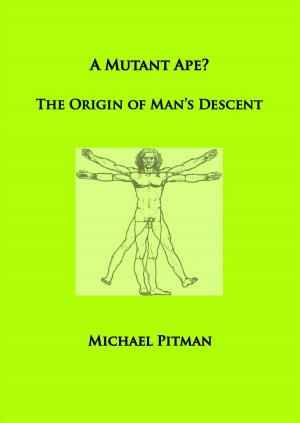The Survival of Beauty and Art
Nonfiction, Religion & Spirituality, Philosophy, Aesthetics, Science & Nature, Science, Biological Sciences, Evolution| Author: | Ekbert Faas | ISBN: | 9780991728336 |
| Publisher: | Aguilar Press | Publication: | May 3, 2013 |
| Imprint: | Smashwords Edition | Language: | English |
| Author: | Ekbert Faas |
| ISBN: | 9780991728336 |
| Publisher: | Aguilar Press |
| Publication: | May 3, 2013 |
| Imprint: | Smashwords Edition |
| Language: | English |
The Survival of Beauty and Art is a direct followup to Faas’ The Genealogy of Aesthetics (Cambridge, 2002), his Nietzschean critique of the Idealist western tradition. Genealogy met with both lavish praise and fierce rebuttal. Professor D. Townsend, head of the American Society of Aesthetics, conceded that its thesis was “clearly and forcefully presented” (European Journal of Philosophy, 2004,4), but has since mounted The Genealogy of Aesthetics: An Attack (2010). More positively inclined reviewers called Genealogy “interesting and far-sighted,” “well-written, polemical, and thought-provoking” (K. Harries, Review of Metaphysics,61:2 Dec 2007) as well as “extensively researched and outspoken.” Ekbert Faas, writes A. J. Rindesbacher, “gives aesthetics theory a decisive push in its move from the head into the body” and “opens aesthetics to a wide array of new approaches, broadly speaking of the life sciences and neuroscience.” (European Legacy, 2005 10:5)
The Survival of Beauty and Art will probably meet with similarly divided responses. The study continues its polemics against traditional (formalist) aestheticians, especially by focusing on more recent ones (like Arthur C. Danto’s) with their Hegel/Heidegger-inspired prophecies about the imminent death of art. However, Faas also critiques the Darwinists’ obsession with trying to prove that art/aesthetics is, say, either an adaptation in its own right or merely a byproduct of more genuine adaptations, like the play instinct.
More generally speaking, The Survival of Beauty and Art develops an unprecedented theory of aesthetics and art. Its five principal categories, the affective, sexual, perceptual, cognitive and cultural, are developed on the basis of today's evolutionary and cognitive science, as well as illustrated via the interpretation of individual works of art. In this it also draws on more traditional disciplines such as iconography, the history of ideas, philosophical analysis, and close reading.
The Survival of Beauty and Art is a direct followup to Faas’ The Genealogy of Aesthetics (Cambridge, 2002), his Nietzschean critique of the Idealist western tradition. Genealogy met with both lavish praise and fierce rebuttal. Professor D. Townsend, head of the American Society of Aesthetics, conceded that its thesis was “clearly and forcefully presented” (European Journal of Philosophy, 2004,4), but has since mounted The Genealogy of Aesthetics: An Attack (2010). More positively inclined reviewers called Genealogy “interesting and far-sighted,” “well-written, polemical, and thought-provoking” (K. Harries, Review of Metaphysics,61:2 Dec 2007) as well as “extensively researched and outspoken.” Ekbert Faas, writes A. J. Rindesbacher, “gives aesthetics theory a decisive push in its move from the head into the body” and “opens aesthetics to a wide array of new approaches, broadly speaking of the life sciences and neuroscience.” (European Legacy, 2005 10:5)
The Survival of Beauty and Art will probably meet with similarly divided responses. The study continues its polemics against traditional (formalist) aestheticians, especially by focusing on more recent ones (like Arthur C. Danto’s) with their Hegel/Heidegger-inspired prophecies about the imminent death of art. However, Faas also critiques the Darwinists’ obsession with trying to prove that art/aesthetics is, say, either an adaptation in its own right or merely a byproduct of more genuine adaptations, like the play instinct.
More generally speaking, The Survival of Beauty and Art develops an unprecedented theory of aesthetics and art. Its five principal categories, the affective, sexual, perceptual, cognitive and cultural, are developed on the basis of today's evolutionary and cognitive science, as well as illustrated via the interpretation of individual works of art. In this it also draws on more traditional disciplines such as iconography, the history of ideas, philosophical analysis, and close reading.















